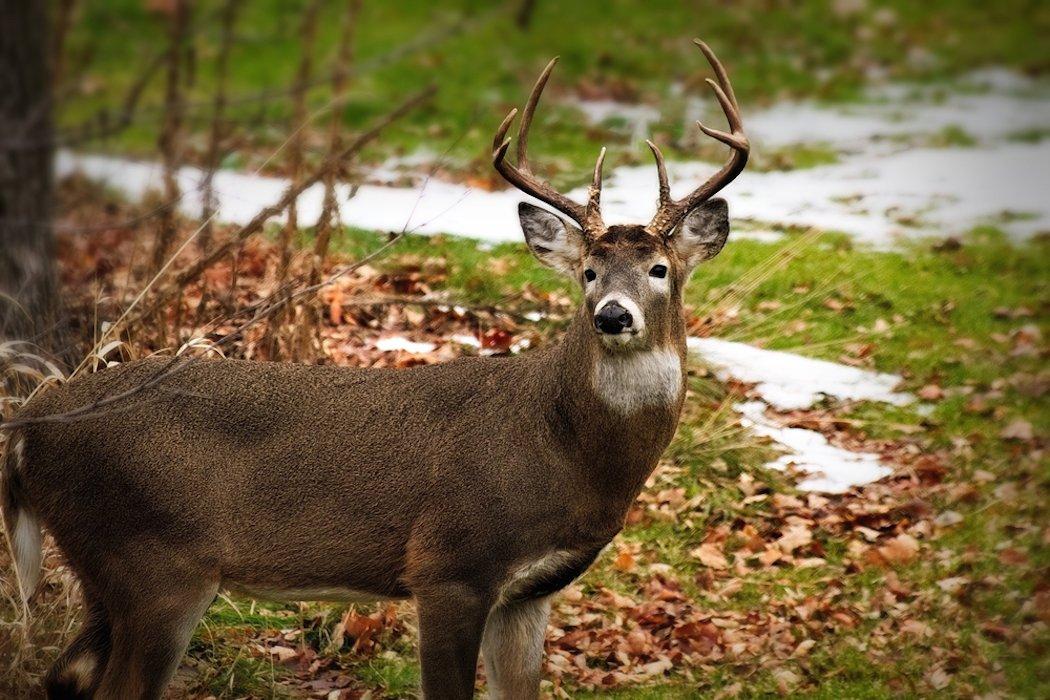A Week-By-Week Game Plan for Deer Hunting in January
There's a lot of constant change in the deer woods from September to December. That said, things don't change much throughout the final month of deer season. In fact, my game plan changes very little from week to week in January.
Sadly, deer season is winding down. But as this season comes to a close, preparations for another will soon begin. But there's still time to fill your 2017-18 tag. So if you hunt the northern half of the country, and it's still open where you hunt, here's a week-by-week plan to target the deer you've been chasing. Hopefully there is a nugget or two you can benefit from in the words that follow.
January 1-6
The late season is driven by food, so your first scouting goal is to find just that. Expect deer to concentrate in big numbers around the best food sources — old bucks included — since they can lose up to 30 percent of their body weight during the rut. Don't count on seeing late-rut activity, but if you do, it'll be because doe fawns have come into estrus for the first time. Those fawns will be on the food same as the other deer, so that's where the bucks will look for them.
In the North and Midwest, late-season food means corn, soybeans, and milo as well as hard mast and brassica plots. Further South and in the East, you can still count on the row crops and hard mast, but also look for green stuff like wheat and oats, clover, and a variety of soft mast and browse. Much of that stuff stays palatable all winter long. Regardless of where you're hunting, grain fields such as corn and soybeans receive more attention when it's bitter cold. Green fields such as wheat and brassicas tend to be more attractive when temperatures are rising.
After you narrow down some food-source options, begin picking apart the terrain, starting with aerial images and topography maps. It's just as important to know where deer are bedding as where they are feeding. Focus on areas that's received less pressure, really thick areas, and south- and east-facing slopes. In general, does bed closer to the food source. Bucks typically bed farther back in the cover and higher up on the slopes.
Gear Highlight: Slumberjack Pursuit Camo Backpack Vest in Realtree MAX-1
It's also important to take every advantage you can get. There are a few key conditions to watch for in the forecast when chasing whitetails. First, a strong cold front is big-buck kryptonite. A temperature swing of 10 to 15 degrees in a 24-hour period will get deer on their feet. But don't overlook warm fronts, either. A chilly, dreary afternoon with steady rain (or snow) often gets deer on their feet early. Also, remember barometric pressure. The best window is between 30.00 and 30.40. The deer should be on their feet with a barometric pressure in this range. And remember to consult the moon overhead, moon underfoot concept chart. Look at it. According to it, deer activity peaks at two points during each 24-hour period. The days where it peaks closest to dawn and dusk are best.
Don't Miss: Deer Hunting the Late Season
January 7-13
If you've narrowed down likely spots to focus on, but are still having trouble finding deer, try new areas. Sometimes it's the spots that look less attractive (to hunters) that are most attractive to deer — those areas received less pressure throughout the season. Scout food sources and trails for fresh tracks, droppings, and even buck sign. It's not at all uncommon to find fresh rubs and scrapes weeks after the rut peaks. When you find the sign you're after, hang cameras right away.
But don't dally, either. Start dialing in on a specific hunt plan if you've found a killer area. If the food source allows for distant observation, spend an evening glassing from an observation stand or simply a good vantage point. If the weather conditions are favorable, your buck will probably step out just before dark. Take in every detail you can about where it comes from and where it goes. Move in to kill the deer the next day.
That's in a perfect world, of course. Sometimes there isn't a smoking-gun food source, particularly if you're hunting in the timber or if the area hunting pressure is especially high. In that case, focus on overlooked sanctuaries. Consider sanctuary or refuge areas that have been untouched all season. Late-season bruisers seek refuge in brush piles, blow-downs, swamps, drainages, old farm machinery piles and fencerows. They're smart. They know where to avoid hunters. Check these areas for big, fresh tracks, and maybe a rub or two. Hang a camera and hope for the best.
Don't Miss: 3 Late-Season Deer Hunting Strategies
January 14-20
If you don't have photo or visual confirmation of a buck yet, climb a tree wherever you've found the best, freshest sign and just see what happens. Leave your cameras out, and return to check them around midday. Remember — and this goes for deer hunting at any time — cameras can't capture a fraction of the intel that you can from a stand.
Something else to note — I've noticed a pattern in my hunting career. More than half of my top 10 bucks were a product of hunting the same spot for consecutive days. Sometimes it was in the same stand. Sometimes it was spent between two stands in close proximity due to wind changes. I'm not encouraging stand burnout, but this late in the game, you don't have much to lose. You've put in your scouting time to this point. You picked a spot for a reason. Hunt it.
Sure, a buck isn't going to do the exact same thing every day, especially not in a pressured area. Therefore, it reduces odds significantly to stand-hop. If deer are there, hunting the same spot several consecutive days will put you in position when that buck finally slips up. Of course, being there when conditions are right increases your odds. One day with great conditions beats several days with poor conditions. It helps to stack the odds in your favor.
Don't Miss: 5 Late Season Deer Hunting Tips and Tactics
January 21-31
You're hunting hard now, and time is running out. But don't get sloppy. You can't afford to bump deer. Undetected entry and exit routes to your stand are critical. Make sure your walk to and from the stand is low-impact. This might mean walking right across an open field to access your stand, but sneaking out by way of a creek in the timber after it gets dark.
Afternoons do tend to be more productive during the late season, but you shouldn't discount the morning sit. My trail cameras have shown mornings aren't as terrible as some hunters believe. Granted, deer are much easier to spook of a morning because they tend to be up and moving while you're getting to your stand. But when you only have a few days, every minute of daylight is time you could be in a tree. If you're hunting one of those sanctuary thickets mentioned earlier, morning sits can be especially productive.
By now, hopefully you've figured out some kind of a pattern. If you've spent some time on the food source and the deer aren't showing up until dark, move 50 to 100 yards closer to the bedding area. Chances are those deer are staging in cover, just out of sight. It's risky, but also the end of the season and your best play.
We've already discussed morning vs. evening hunts, but don't overlook midday, either. We think we pattern white-tailed bucks. Reality shows us it's often the other way around. Some studies suggest that buck movement between 10 a.m. and 2 p.m. increases during the late season.
Lastly, if you don't get your deer before the final bell rings, don't worry. Hunting isn't just about killing. And you'll likely get to hunt that big deer again next season. Until then . . .
Don't Miss: 9 Late-Season Deer Hunting Tips from the Pros
Are you a deer hunter wanting to learn how to accomplish your goals? Check out our stories, videos and hard-hitting how-to's on deer hunting.









